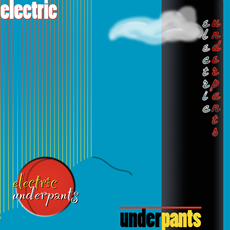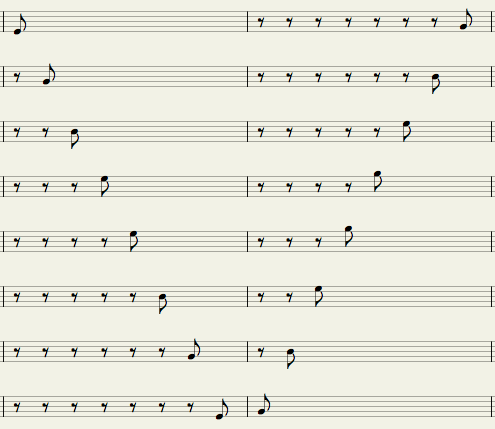geebo2b wrote:I have no EQ plug in for Notion.
As a result I cannot EQ orchestral instruments separately. I compose using 'Full orchestra' which presents enough problems with my CPU and crackling. This could be avoided if, like DP6, I could mix down individual tracks into audio files so I could eliminate virtual sampler tracks which suck up all the CPU. Then I can Eq each track individually using the audio files instead of the 'virtual sample" As it is now, Notion doesn't allow that freedom., I have to run 'EVERYTHING' from the virtual samplers which tax the daylights out of my CPU and I can't EQ the individual instruments. So I cant bounce each instrument to it's own track so as to Eq. As a result I have to leave it all muddied up as one Huge bounce. any suggestions?? Help!! I have a major project using a Full orchestra from my Miroslav orchestra and no way to record and Eq separate trax!!
I did a lot of experimenting and testing over the past year starting when I first got Notion 3, and the best way to do what you want to do on the Mac is (a) to use Notion 3 for music notation and virtual instrument audio generation and (b) to use Digital Performer for mixing and mastering, where the Notion 3 generated audio is recorded in Digital Performer via ReWire as soundbites, which works wonderfully when you follow a few very simple rules . . .
[
NOTE: There are other DAW applications for the Mac, but you mentioned Digital Performer (MOTU), so using what you have makes sense. Logic Studio (Apple) is another great DAW application for the Mac . . . ]
The basic reality from a computing perspective is that Notion 3 is doing so much real-time audio processing that there are limits to what it can do, especially when you are using what I call "heavy" virtual instruments, so the strategy is to focus Notion 3 on doing music notation and virtual instrument audio generation in real-time, which is what Notion 3 does . . .
Mixing and mastering is done in the Digital Audio Workstation (DAW) application, which in this instance is Digital Performer, and the Notion 3 generated audio is recorded in Digital Performer via ReWire as soundbites . . .
This is
important, because once the Notion 3 generated audio is recorded in Digital Performer as soundbites, Notion 3 is out of the picture, and then Digital Performer is working only with soundbites, where the reality is that soundbites do
not require a lot of "heavy" processing, with the result that Digital Performer's application workspace can be used for elaborate effects, automation, and so forth and so on . . .
I do everything on a 2.8-GHz 8-core Mac Pro with 8GB of memory (8x1GB) and very fast hard drives, running the current version of Mac OS X (10.6.7), but the reality is that everything is 32-bit (Digital Performer 7, all the IK Multimedia virtual instruments, Notion 3, and the other VST effects plug-ins, as well, although IK Multimedia just released a 64-bit version of T-RackS), so by the time you have 20 to 25 "heavy" virtual instruments in a Notion 3 score, you are pushing the upper limit of what can be done in a 32-bit application workspace, which also is the case with Digital Performer 7, so the key is to focus the applications (Digital Performer 7 and Notion 3) on what they do best . . .
You cannot have 500 tracks in a Digital Performer 7 project, and you cannot have 500 instruments in a single Notion 3 score, but you can 500 to 1,000 instruments and tracks in a
managed set of Notion 3 scores and a single Digital Performer 7 project when you use layering techniques that combine tracks in the digital equivalent of the layering techniques that Les Paul, Phil Spector, and George Martin developed and used in the 1950s, 1960s, and 1970s with analog magnetic tape machines, all of which maps to a virtually mind-boggling digital audio production system that essentially has no limitations once you discover and follow a few simple rules . . .
If you have Digital Performer 6 (MOTU), then you can get the Notion 3 generated audio into DP6 via ReWire where you can record the tracks as soundbites and then switch to doing mixing and mastering in DP6, which works very nicely . . .
This is the way I do it, except that I use DP7 (current version) . . . My focus at present is on silly
DISCO and
Pop songs about ladies underpants, and I use a lot of IK Multimedia virtual instruments, all of which are "heavy" with respect to computing resources, so I limit the number of instruments in a Notion 3 score to somewhere in the range of 20 to 25 . . .
[
NOTE: The idea for composing, performing, and recording silly DISCO and Pop songs about ladies underpants appeared sometime early in the morning on New Year's Day 2010 when I realized that the Arch Enemy song I had been enjoying had lyrics that included the phrase "carnivorous Jesus", which took a while to hear, since the singer (Angela Gossow) screams rather than sings, so being in a particularly silly mood I decided to spank Angela metaphorically by composing, performing, and recording a silly song about her underpants, which was so much FUN that I decided to do an album of songs about ladies underpants, since at the dawn of the early-21st century I think the world needs at least one album of songs about ladies underpants. Andy Warhol did iconic drawings of Campbell's Soup cans, and I do silly songs about ladies underpants, which is an artistic thing, for sure . . . 
]
"Ravenous" (Arch Enemy) -- Live in Japan -- YouTube music video"(I Want) Angela Gossow's Underpants (Ya-Ya-Ya)" (The Surf Whammys) -- YouTube music video"(Baby You Were) Only Dreaming" is the current song I am developing for my pretend musical group, The Surf Whammys, and it has 56 virtual instruments that are spread over 5 Notion 3 scores that are synchronized (which is easy to do). At present, it is what I call the "basic rhythm section", so all the instruments are virtual and are done with music notation in Notion 3, really . . .

[
NOTE: This is a headphone mix, which is the way I mix when I am working on a song, so it is easier to hear the motion stuff when you listen with studio-quality headphones like the SONY MDR-7506 (a personal favorite). Once the "basic rhythm section" is completed, I switch to recording real instruments and vocals, where the real instruments primarily are electric guitars . . . ]
"(Baby You Were) Only Dreaming" (The Surf Whammys) -- MP3 (9.4MB, 281-kbps [VBR], approximately 4 minutes and 35 seconds)I use T-RackS 3 Deluxe (IK Multimedia) for mixing and mastering, and since I do the mixing and mastering in Digital Performer 7 using soundbite tracks I can use elaborate effects on individual tracks, since all the "heavy" processing for the virtual instruments and real-time audio generation is completed and packaged in the respective soundbites . . .
There are a few somewhat eccentric rules for doing ReWire with Digital Performer as the host controller and Notion 3 as the slave, but they are simple rules, and they are easy to follow, where these are the high-level summaries of the rules:
(1) Do not use Notion 3 Channels 1 through 10 . . .
(2) Set all the Notion 3 track volume levels to 0dB . . .
(3) Set the Notion 3 panning for each track to the full range, unless you are doing panning-location specific "sparkling", in which case set the panning-location for the "sparkled" tracks very precisely . . .
For reference, "sparkling" is a technique that puts the notes of instrument into motion in what I call the "Spherical Sonic Landscape™" and is done by spreading the notes of the instrument over as many as 8 staves, where each staff and corresponding Notion 3 track has a specific panning location. When you want a note played at a specific panning location, you put the note on the respective staff but replace the note with an equal-valued rest on the other staves, which for an 8-clef "sparkle" looks like the following screen capture in music notation:
 8-Clef "Sparkled" Harpsichord ~ Notion 3
8-Clef "Sparkled" Harpsichord ~ Notion 3[
NOTE: I like notes to move around, and this is one of the things that Notion 3 does in a very precise way, where the key to "sparkling" is absolute precision in panning locations . . . ]
(2) Insert four empty (blank) measures at the beginning of the Notion 3 score . . .
(3) Always position the Digital Performer transport no earlier than the beginning of the 5th measure (which is where setting a Digital Performer "Marker" is handy) . . .
(4) Start Digital Performer first, and then start Notion 3 . . .
(5) When the Notion 3 generated audio is recorded in Digital Performer as soundbites, close Notion 3 first and then close Digital Performer when you are finished with mixing or whatever . . .
Lots of FUN! :)

